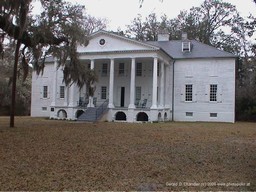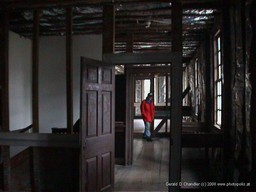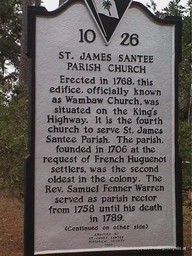Home | Front Page | Index | Blog | New | Contact | Site Map
South Carolina
Visit Eddys
Hampton Plantation
Photos

Virginia
North Carolina
South Carolina
Georgia
Florida
Alabama
Mississippi
Louisiana
Texas
Arizona
California
Nevada
Index 1999-2002
Index 2003-2004
Index 2005-2006
Index 2007-2008
Index 2009-2011
The day after we arrived on the Isle of Palms, we all piled into Mike and Beth's new Ford Expedition to drive to the nearby Hampton Plantation State Historic Site , a plantation complete with mid-18th century plantation house. The plantation was founded by French Huguenots in 1735.
The Plantation was donated to the state by its last owner sometime in the early part of the 20th . ntury. The main activity on the plantation was rice cultivation at which it was very successful in its day, so successful that the plantation was doubled in size. Like most southern plantations it relied on black slave labor.


We took a guided tour of the downstairs rooms of the house followed by a self-guided visit of the upper floor and then wandered into the garden to admire the camellia bushes which were still in bloom. Then we went down to the river at the bottom of the garden that was used in the plantation's heyday to ship away the rice crop and bring supplies. In the perfect peace of this late winter afternoon, it was hard to imagine the place bustling with life and activity.
The plantation house is in need of some fixing up, but little by little the state is scraping together the funds to restore it to its former glory. Here you can see Mike wandering around upstairs where the lath and plaster walls have been removed but not yet replaced.
Next we drove over to the St. James Santee church, parish church of the family from the plantation house and other Huguenot families from the area. A lovely church it is rather unusual, being built in the round rather on the typical cross-shaped plan. We were happy to find that the doors were open so that we could take a look inside and admire the high-sided wooden pews and heavy doors.

